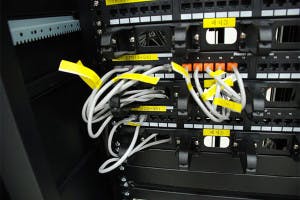With every project, there are hidden costs you didn’t expect. One major area that gets underestimated is outsourcing transition costs.
What are outsourcing transition costs? They occur during your transition period, usually 3-12 months after you’ve agreed to outsource. They aren’t contract related, and many are opportunity costs.
There are six key areas during the transition period that can blow up your budget. During this period of the outsourcing processes, you should not expect to save money. In fact, you’re going to incur heavy expenses.
Here are the six areas you need to make sure you factor appropriately when budget time comes around.
#1 Communications

Internal, external, and marketing communication costs are going to hit during the transition process. Internal costs are communications between departments, both written and verbal. When you’re dealing with an outsourcing project at an enterprise company, your senior level people will need to be in constant communication with lower-level team members.
These stakeholders need to be around to maintain morale. They should meet with individuals constantly to understand hiccups. This is time they normally could spend performing other activities, so you’re losing productivity from your best people.
If you’re a major company, you should expect to deal with some negative feedback from media as well since if you’re sending jobs out of the country. Even if the jobs aren’t going overseas, you might need to deal with local media. Your external and marketing costs are designed to protect your business so don’t think “If I ignore it, it will go away.”
External communication costs can tally up, especially if you’re shutting down a major location to outsource those jobs. The problem with this is you can never accurately estimate the cost since you don’t know the media impact beforehand.
#2 Travel
Travel will hurt, especially if you’re outsourcing overseas. You’ll bring people to the U.S. to train them on your product. You’ll send your best people overseas to check in with the new group and check out the facilities.

Travel costs are obvious. But productivity lost from travel is a hidden cost as well. This will make your people tired and often frustrated.
Don’t forget about breakdowns in communication due to travel. Projects will go slower and problems will occur.
#3 Knowledge Transfer
During this onboarding process, there will be a knowledge transfer that won’t go as fast as you’d like. You could be dealing with cultural and language differences.

With regards to cultural differences, there’s a lot of variables. For instance, if you outsource development, in some countries developers tend to do exactly what the client asks—even if they think it can be done better, where as other developers with a different culture are more likely to attempt to change their client’s mind.
The cultural barrier can occur for local outsourcing as well. You might have company policies or security requirements that might take time for your outsourced employees to get used to.
#4 Salaries
During this period you’ll also have to pay appropriate wages. If you fly someone into the country, they will probably need to be paid. If this wasn’t discussed in your contract, you might end up paying this. Depending on your agreement, you might need to pay for travel visas as well.

Since you’ll be paying some of your current employees to train these individuals, you’ll be paying double while getting less productivity (since there will be an on-going teaching/learning process).
If you retain some of your employees for the transition period, expect to pay them extra not to leave. These are your most valuable employees during this entire process, and losing a few critical individuals could set you back months.
Pay these people well during this period and try to keep their morale up. Promise good recommendations. Help them network. But again — all this costs money and time. Expect your salary costs to at least double during the outsourcing transition period.
#5 Hardware Transitions

If your transition period includes switching from your hardware to the outsourced company hardware, you’ll find a lot of hidden costs as well. This includes electricity, transfer of data, integrations between new and old systems, failover, etc.
Your ongoing hardware maintenance budget might double as you pay for both new and old equipment while dealing with any problems integrating new infrastructure.
#6 Meetings

There will be lots of meetings, usually with strategic people in your organization. If you don’t plan meetings well, you might lose a lot of productivity from some of your best people.
Make sure you understand the purpose of meetings, who needs to be invited versus who just needs to be informed, and take careful notes on what the next steps are and when they’re supposed to be done.
While outsourcing jobs can save you money in the long run, you should expect heavy costs in the initial 3-12 months. In fact, it might take up to two years to save on an outsourcing project. If you’re an executive making this decision, make sure you consider all the costs and your own personal timeline with the company before outsourcing.
